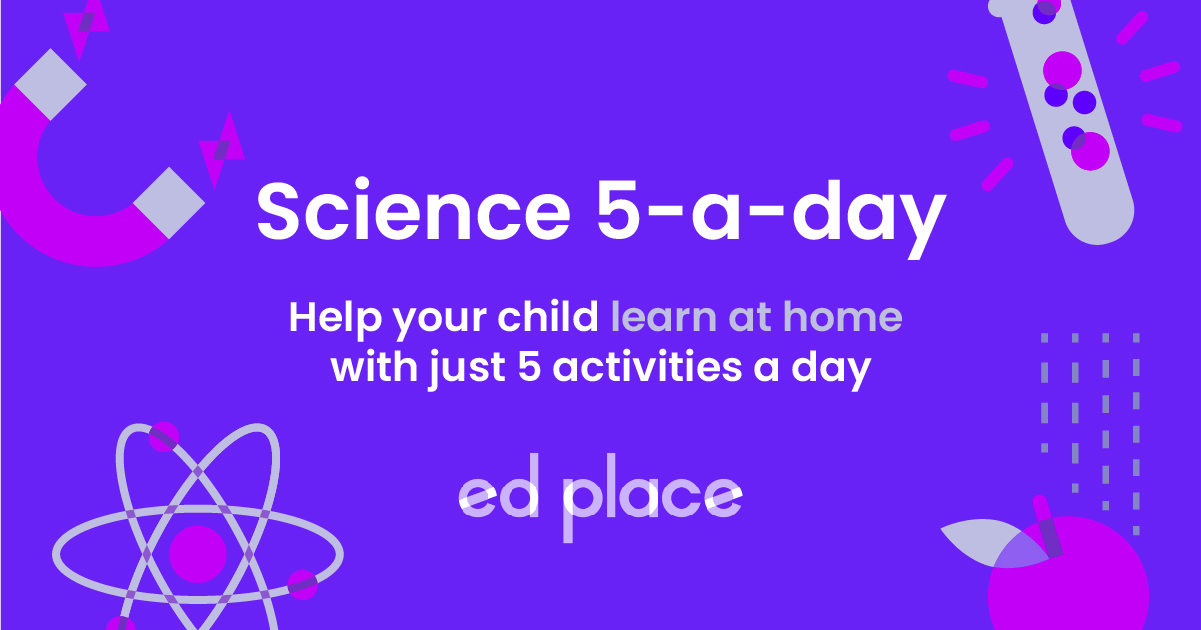
EdPlace's Upper KS2 Home Learning Science Lesson: Circuits
Looking for short lessons to keep your child engaged and learning? Our experienced team of teachers have created English, maths and science lessons for the home, so your child can learn no matter where they are. And, as all activities are self-marked, you really can encourage your child to be an independent learner.
Get them started on the lesson below and then jump into our teacher-created activities to practice what they've learnt. We've recommended five to ensure they feel secure in their knowledge-5-a-day helps keeps the learning loss at bay (or so we think!).
Are they keen to start practising straight away? Head to the bottom of the page to find the activities.
Now...onto the lesson!
Breaking Down Your Child's Resistance to Electric Current
Electric things are so much part of our lives! Gaining a current understanding of how electricity does what it does is vital life learning. So, is it OK to add more and more stuff into a circuit and will it work the way you want it to? It’s time to switch on the memory cells and get ready for a flow of charged articles.
At EdPlace we’re surrounded by a team of experts who communicate these concepts with children on a day-to-day basis, and we’re ready to share their teaching gems with you. Every good lesson has a purpose or an objective. We’re confident by the end of this that your child will:
1) Understand the effect of increasing/reducing voltage and its effect upon the components in a circuit
2) Apply this understanding
3) Explain this back to you (if they've really cracked it!)
Step 1 - Clarify Key Terminology
So, what have we seen already? Terms like current, electricity, resistance, brightness, battery, volume, voltage, cells – it can really get confusing. So, let’s try to sort out some meanings.
It sometimes helps to think of a flow of electricity in wire just like a flow of water in a hosepipe. What makes the water flow? The water pressure from the tap! If electric current is like the flow of water (like a river current), what pushes the electricity along the wire? The push (or pressure) from the battery of cells.
What happens if you turn the tap on more? The water flows more quickly inside the hosepipe. So too, with the electric circuit – add more cells to the battery and what do you get? A faster current flowers in the wire because there’s a bigger push (that’s voltage) from the battery. You just have to go with the flow!
What happens if you step on the hosepipe while the water’s flowing down it? The hosepipe has less room inside now (it’s been squashed), so the water slows down – you’ve created resistance to its flow. That’s exactly the same with the flow of electric current in a wire: add in something like a bulb or a buzzer and it makes it more difficult for the current to move along – that’s resistance. Add more and more things into the electric circuit and it just makes it harder and harder for the current to flow along, so it slows down – that’s lots of resistance! Is this breaking down resistance to understanding?
By the way, the words battery and cells can be confusing, but they don’t have to be: if a gun battery consists of a number of guns lined up, working together, then a group of electric cells joined together to make up an electric battery. Does that spark the imagination?
Step 2 - Key Terminology
We need to sum all that up before we tackle any questions…
Electric current = flow of electricity down a wire.
Voltage = push from the battery to make the electricity move.
Battery = group of cells that provide the voltage.
Components = things that can be added into a circuit, like lamps (bulbs) and buzzers.
Resistance = slowing down the flow of electric current by trying to push it through the various components in a circuit.
To save time drawing electric components there are useful little symbols to represent things that are regularly added into a circuit:
1 cell =
Lamp or bulb =
Buzzer =
Switch =
Step 3 - Fundamental Friction!
We’ve seen that increasing the voltage (the number of cells in the battery) increases the current.
Also, increasing the resistance (say, by adding lamps and other components) decreases the current.
The speed of the current also determines how bright lamps are (brightness) and how loud buzzers are (volume):
More current = brighter lamps and louder buzzers.
Less current = dimmer lamps and quieter buzzers.
Makes sense really!
So, take a simple circuit with one cell and one lamp:
Now add a second cell – that means more voltage and so more current.
What happens to the brightness of the lamp? It gets brighter!
What happens if that single cell has to push current through two lamps?
That’s more resistance, so the current’s slower and that means the lamps
are not as bright – they’re dimmer.
Exactly the same is true of buzzers – just louder/quieter instead of brighter/dimmer, of course!
What’s a switch then? Simply a gap in the circuit across which electric current
cannot flow (air’s bad at conducting electricity). Close the switch, complete the
circuit and the lights come on!
Step 4 - Give it a Go!
Why not check out these questions to see whether things are flowing better and your resistance is breaking down?
First off, here’s our basic circuit:
For each of the following circuits, compare it with this one and ask:
Has the current increased/decreased/same as before?
Has the resistance increased/decreased/same as before?
Are the lamps brighter/dimmer/same as before?
Are the buzzers louder/quieter/same as before?
1.
2.
3.
4.
Now, keep the same idea – compare these with that first basic 1 cell/1 lamp circuit and ask those same questions.
5.
6.
7.
Finally, let's add some switches and challenge you – still comparing each circuit with that basic 1 cell/1 lamp circuit, ask yourself, “When the switch is closed how will the current and resistance in this circuit compare with that circuit?”
8.
9.
10.
All the circuits you’ve dealt with here are a simple complete loop. You’ll learn to say that all the components (cells/lamps/buzzers/etc.) are connected in series, that is they’re all next to each other. This means that any changes in the circuit affect everything. The exciting news is that at key stage 3, a new type of circuit will appear – where components are connected in parallel – and it’ll be fun to find out if they behave differently!
Step 5 - Activity Time
Now, you’ve covered this together why not put this to the test and assign your child the following five activities in this order.
All activities are created by teachers and automatically marked. Plus, with an EdPlace subscription, we can automatically progress your child at a level tailored to their needs. Sending you progress reports along the way so you can track and measure progress, together - brilliant!
Activity 1 - Circuit Basics (1)
Activity 2 - Circuit Basics (2)
Activity 3 - Wires and Components
Activity 4 - Changing Wires, Changing Circuits
Activity 5 - Circuit Diagrams (1)
Answers
Did you apply the basics? More cells = more current = brighter/louder. More resistance = less current = dimmer/quieter. Let’s see how you get on...
1) 2 cells: 1 lamp = more current so brighter lamp.
2) 2 cells: 2 lamps = same current so same brightness.
3) 2 cells: 1 buzzer = more current so louder noise.
4) 1 cell: 1 lamp + 1 buzzer = more resistance so dimmer lamp/quieter buzzer.
5) 2 cells: 1 lamp = more current so brighter lamp (note the cells are + to -, so they work).
6) 2 cells : 1 lamp + 1 buzzer = same current so same brightness/same loudness.
7) 2 cells: 2 lamps + 1 buzzer = more resistance so dimmer lamps/quieter sound.
8) Close switch and it’s 2 cells: 2 lamps = same current so same brightness.
9) Close switch and it’s 2 cells: 1 buzzer = more current so louder noise.
10) Close switch and nothing comes on as the cells are facing + to + so no current flows!
Keep going! Looking for more activities, different subjects or year groups?
Click the button below to view the EdPlace English, maths, science and 11+ activity library








